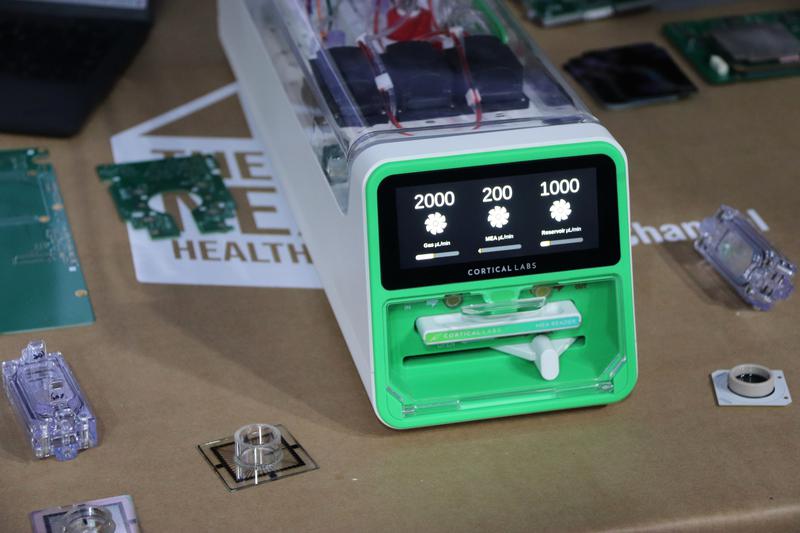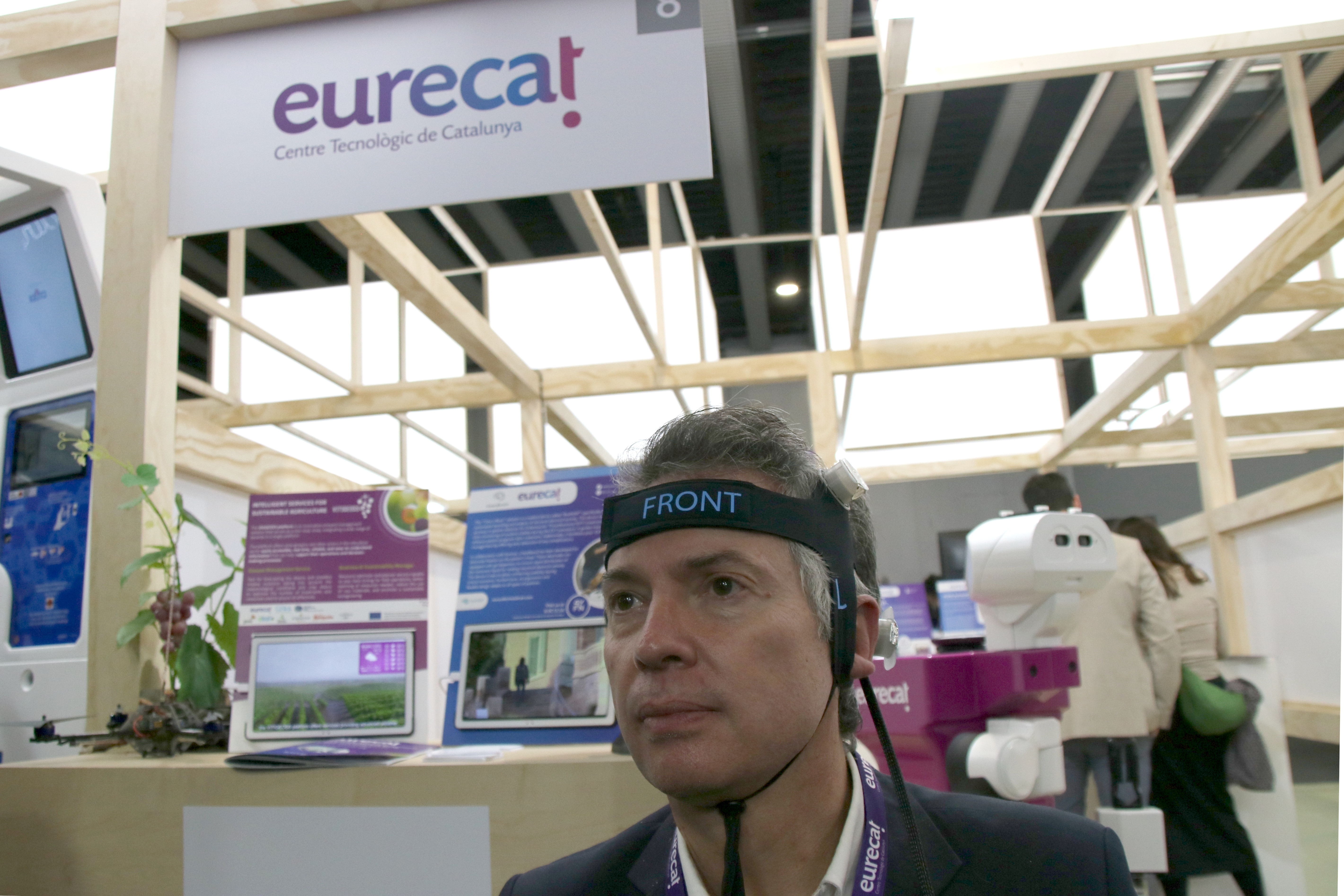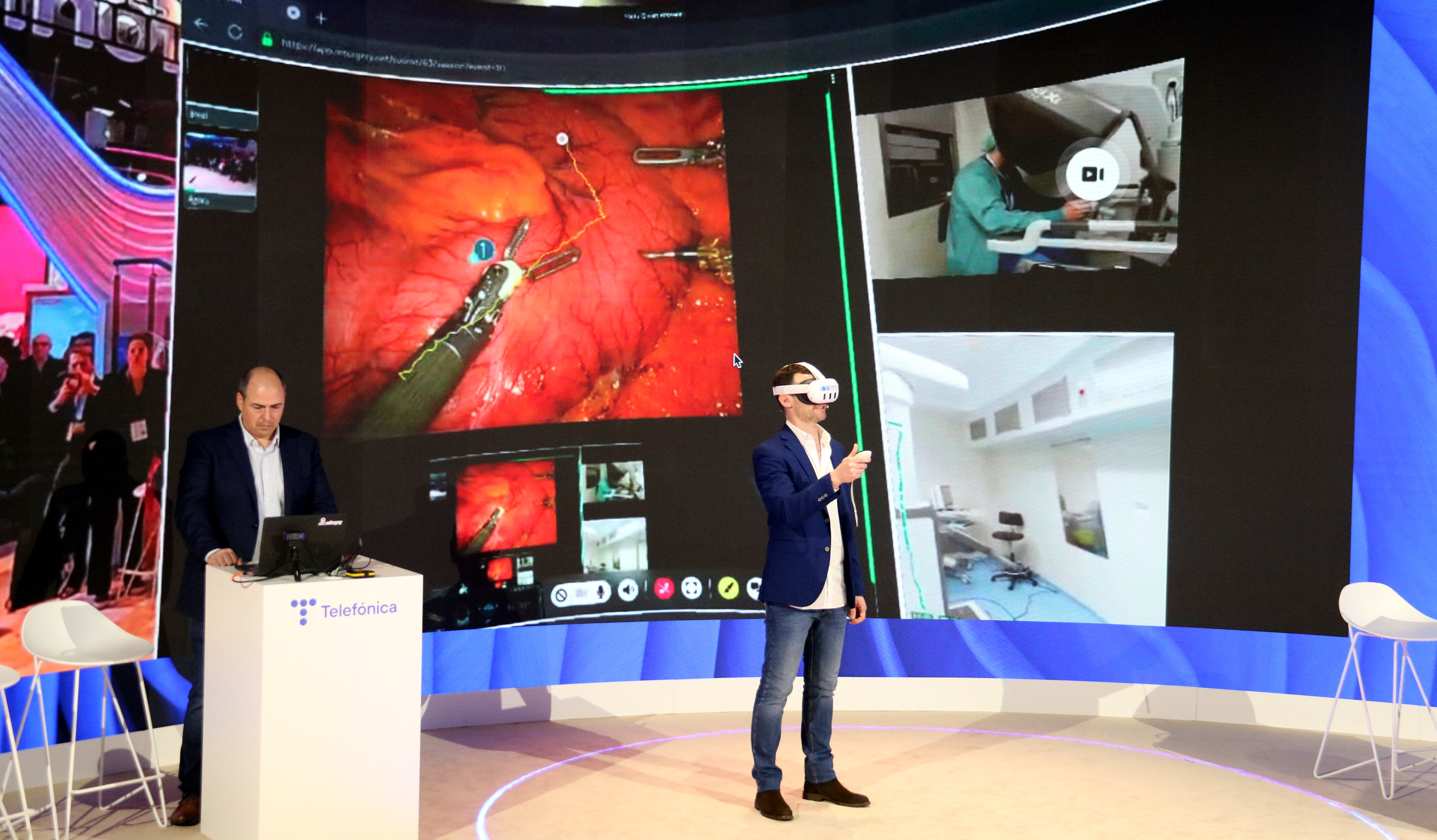Exploring the limits of healthcare at Mobile World Congress 2024
Biological computers, headbands to collect data of stroke patients, and VR training headsets displayed at tech fair

The Mobile World Congress is a global tech event that goes far beyond mobile phones. Innovations in healthcare are one of the aspects that, year after year, gain huge prominence at the world’s largest mobile industry tech fair.
This edition of the Mobile World Congress highlights several new items and prototypes aimed towards the diagnosis and treatment of diseases, especially neurological and cardiac ones.
A biological computer, a headband that monitors the brain activity of a stroke patient, and a supercomputer-powered simulation of a heart are some of the most outstanding examples in this year’s edition. The use of artificial intelligence is key to addressing pathologies linked to the brain and heart, as well as finding the most appropriate treatment for the patient.
Australian company Cortical Labs is exhibiting the first biological computer at this year’s Mobile World Congress. "Human neurons do the calculations," explains one of the company's founders, Jackson Gritching, to the Catalan News Agency (ACN). "We obtain these neurons from stem cells and by interconnecting them in a computer we can have information that can help in the treatment of diseases such as epilepsy or Alzheimer's", he explains.
A prototype is being shown off at MWC, but Cortical Labs is working to present the real thing at the end of this year. "The aim is for many people to benefit from it and for it to be used in hospitals and pharmaceutical companies," Gritching points out.
Human neurons power the computation, and with these neurons, the machine plates them in a computer dish “and then interfaces with them electrically to get information into and out of this biological neural network. We don’t have to guess and check what would be the best drug to deliver to the patient, you’re able to test them beforehand,” Gritching says.
Supercomputing for heart treatments
At the Barcelona Supercomputing Center (BSC) stand, a human heart has been reproduced to treat patients with heart disease.
"Through the use of supercomputing, it has been possible to develop models to recreate this organ and identify the best treatment, especially for patients with heart disease," says Alba Jene, scientific coordinator of the BSC's Life Sciences department.
This heart simulation can be accompanied by genetic and genomic data, as well as clinical tests such as an electrocardiogram.
This has all been made possible thanks to a tool that "creates an avatar of people, of their organs, to make simulations," Jene says, adding that the same technological advancements could potentially be used on tumors and other organs, as well as other fields beyond health.
A headband for stroke patients
The Eurecat technology center is also presenting several devices at the congress that are still in their testing phases.
One of them is a headband, developed together with the company Time is Brain, for patients who have just suffered a stroke. The device emits waves in the brain after the stroke and when the patient arrives at the hospital, doctors already have important basic information to be able to address each case before entering the operating room. This headband is already being tested in two clinical studies in five hospitals.

The other item on display at Eurecat’s stand is an assistance robot that is part of the European project Never Home Alone, and is intended to help people who live alone who need help with basic tasks. The robot has an arm that can help a person with things such as dressing or picking up an object from the ground.
In two to five years, the first of these robots may already be deployed in people’s homes, the company predicts.
VR to train surgeons
The Germans Trias Hospital in Badalona and Telefónica have presented a pioneering tool to revolutionize training in robotic surgery, powered by 5G, virtual reality and augmented reality. The tool allows remotely connected medical professionals wearing VR headsets to, remotely and in real-time, follow a surgical intervention.

“Robotic surgery training is a slow and tedious process,” explained Jordi Tarascó, a specialist at the Germans Trias hospital, to ACN after giving a demonstration of the headset. This tool, he added, “makes it possible to reproduce the immersive sensation that the surgeon has in training sessions and in real-time.”
The public attending the presentation was able to follow a live stomach reduction operation carried out at Germans Trias Hospital. The application, through several high-resolution cameras, reproduces the experience of the surgeon performing the operation.